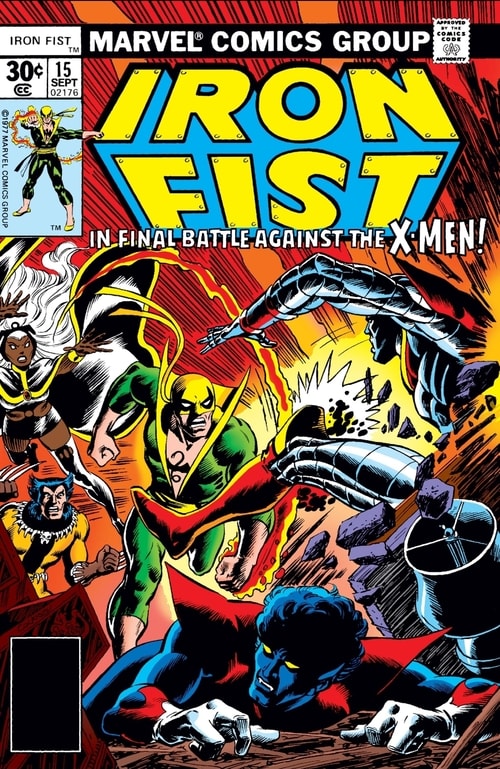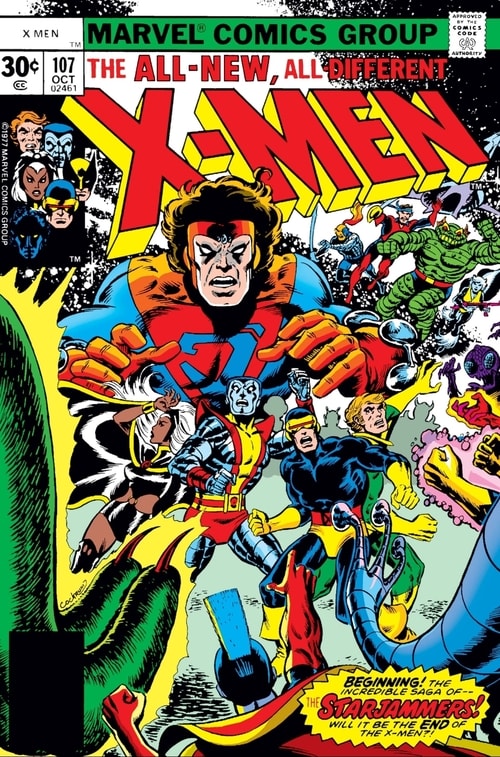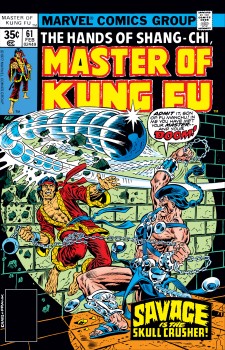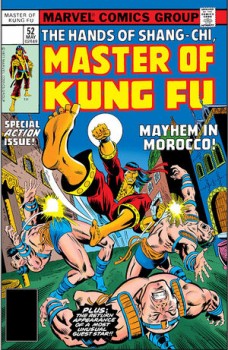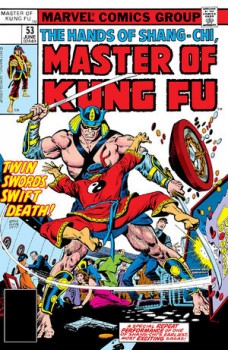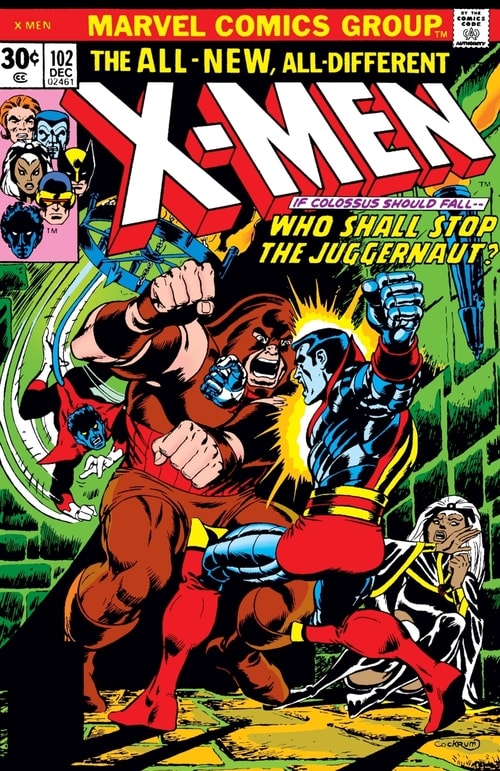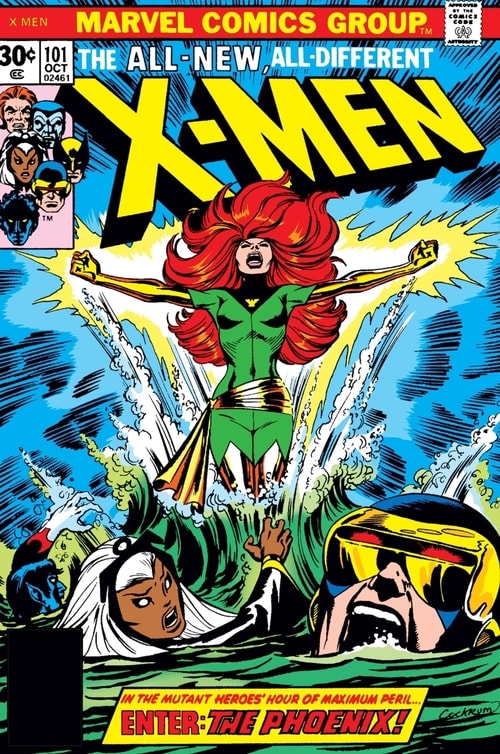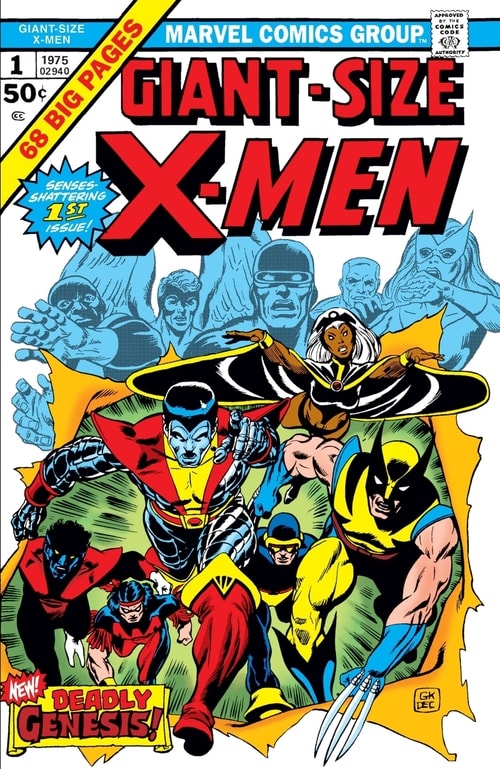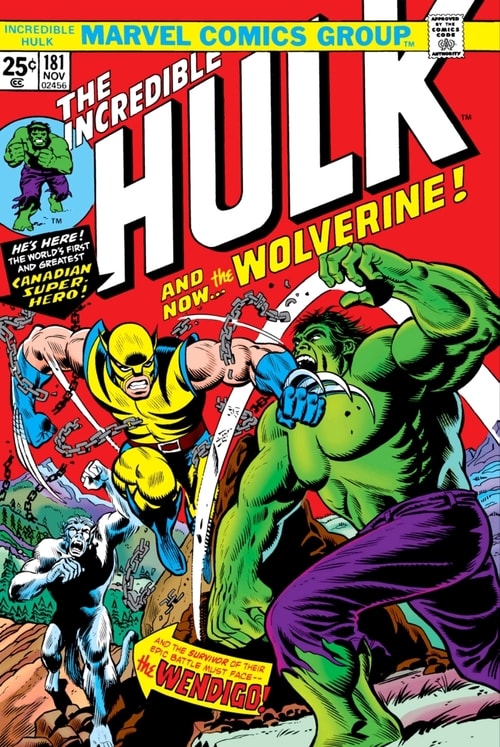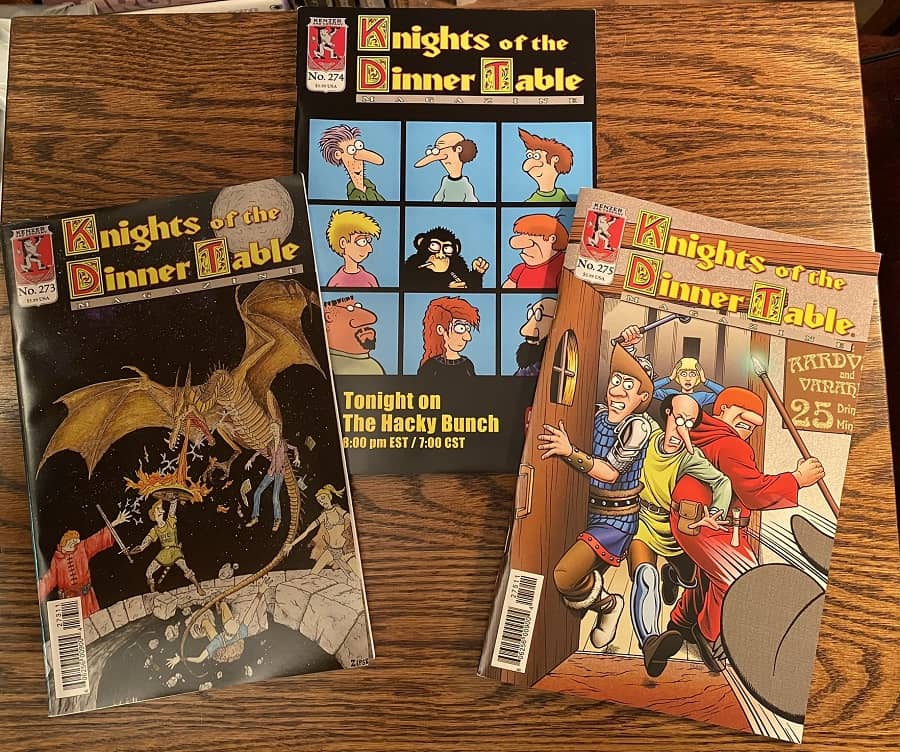
Three issues of Jolly Blackburn’s long-running
Knights of the Dinner Table, all shipped simultaneously: #273, 274, & 275
The COVID-19 pandemic has played havoc with virtually every aspect of life around the globe. That was driven home to me (again) when three issues of my Knights of the Dinner Table subscription were delivered in a single envelope last week.
Given all the upheaval the world has gone through in just the last five months, it was an eerie look into the recent past to open the first of them, issue #273 (planned on-sale date: May 2020) and read Jolly R. Blackburn’s editorial, written in March 2020 and titled “And Just Like That — Everything Changes.” Children of the Apocalypse, gather round and read these words from the long ago before-time:
Hey folks — I hope this finds each of you reading this, healthy, safe and doing well. Clearly, with what has transpired in recent weeks, that is most certainly not the case for everyone. Many of you have likely lost loved ones, are sick, unemployed, wondering what the future will bring or all of the above. This is indeed something that has left no one untouched.
I [know] that Knights of the Dinner Table has always been a refuge of sorts from the hard realities of the real world. Readers come here to forget their worries, have a laugh, possibly be touched and celebrate the love of rolling dice and gaming with friends. That won’t change… we’re all in this together, despite differences.
As I write this, there is a lot going on. The nation is in a state of self-isolation and shut down. I wanted to tell you what that means for KenzerCo and the Knights even though in the grand scheme of things, it might be the last thing on your minds. We are fortunate in that we are a small company with our own warehouse and shipping facility. Barb and I continue to ship product twice a week and can do so without interacting with others. So we are completely safe in doing so.
Here’s the glitch. Our distributors recently announced they will NOT be shipping product to retailers until this is all over. Which is understandable because many game and comic shops are currently shutting down and there’s no place to ship product to.
On top of that, the printer who publishes our monthly deadtree issues is in a shutdown also!
Take it from me: It’s tough to keep a monthly magazine going when both your printer and your distributors cease operations. But Jolly and team battened down the hatches and did it, producing digital issues, and getting them out to subscribers, on time. And when their printer opened up again they did a bulk run of all three issues, shipping them to subscribers as quickly as possible. Getting all three at once allowed me to read the issues back-to-back, and re-appraise just what it is that Jolly is doing, and how much it’s impacted the hobby.
…
Read More Read More
